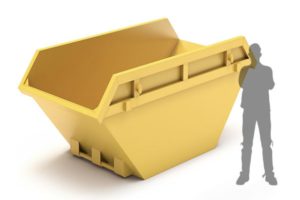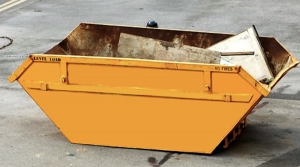Asbestos waste is any asbestos material or product, which is ready for disposal. The waste also includes personal protective equipment, contaminated building material, decontaminated tools, damp rags, etc.
You can either treat asbestos waster as “hazardous” or “special.” According to the Control of Asbestos Regulations (UK) 2012, asbestos fibres can cause lung cancer. Therefore, it is essential to dispose of this hazardous material carefully.
The maintenance and removal of asbestos is a daunting task for homeowners and commercial property owners/users. Exposure to microscopic airborne fibres is hazardous for health and can cause a variety of serious conditions, such as asbestosis, mesothelioma, and lung cancer.
Therefore, you must follow the guidelines defined by the Health and Safety Executive (HSE) and take all reasonable measures to safeguard yourself and your family. The UK government has now put in place well-established standards, protocols, and practices to ensure proper management of asbestos-containing materials (ACMs) to decrease the risk of exposure.
In today’s article, we will tell you about the asbestos disposal process and what steps you need to follow. Make sure you go through the post carefully so that you comprehend all the essential information and get the most out of it. Read on!
Can You Remove Asbestos Yourself?
You may have old material or equipment that contains asbestos, such as fire blankets, ovens, insulating mats, ironing surfaces, etc. You can find asbestos in your car’s old brake pads and clutch linings. When you want to dispose of this equipment, you have to treat it as asbestos waste.
Usually, asbestos-contaminated soil is created by mixing demolition rubble with clean soil. The primary reason behind this is poor housekeeping, especially at industrial sites. Another reason for this is inadequate waste disposal practices. The law required a person to store the waste securely to avoid contamination.
Removing asbestos is a risky task because the material is dangerous when you move or it. The fibres of the material are released into the air and people can inhale them. As a result, the fibres entering the lungs would cause severe damages.
If you are not a qualified person and do not have the experience working with asbestos, it can even become more dangerous by releasing fibres into the atmosphere. Not only is this hazardous for you but for any individual who passes through the area for a significant time afterward.
If you want to remove asbestos yourself, it is essential to seek advice from the local council in your area. Follow the standards/protocols required for the safe removal and disposal of the substance. However, it is always recommended to talk to asbestos experts who have experience in removing and disposing of the material.
Disposing of Asbestos Waste – Step BY Step Process
Asbestos is a carcinogenic substance that can cause cancer. It is extremely dangerous to human health and the environment. Asbestos is a firm material that does not break down easily. So, it remains in the air for a long time.
Step 1: Identify Hazardous Waste
Material is hazardous when it contains more than 0.1% of asbestos. It is wise to deal with hazardous waste according to the protocols and measured defined by the HSE. Avoid mixing asbestos waste with any other types of waste materials.
You must double-bag any waste that contains asbestos and place the bag in a covered and locked skip. For instance, this includes over-shoes, sampling wastes, protection equipment, which might have come into contact with this hazardous material.
Personal protective equipment (PPE) contaminated with this carcinogenic substance should be disposed of as asbestos waste. The other way is to clean the PPE in an equipped facility. You will treat your personal clothing (contaminated with asbestos) in the same way as contaminated PPE.
If you send your equipment for cleaning, reusing, or disposing of, you must pack it in a suitable container and label it properly. Don’t break large asbestos sheets and instead, take a polythene sheeting and wrap the asbestos.
Step 2: Label Asbestos Items
The UK law requires an individual to properly label raw asbestos. For instance, you must either stick the label or print it directly onto the packaging. Qualified and licensed asbestos disposal contractors use thick, red plastic sacks with warning labels printed on them.
There are different types of labels available on the market, such as warning labels and stickers, self-adhesive labels, warning tapes to cordon off contaminated areas, safety posters for the neighbourhood, home, workplace, and tags for hazardous goods.
Step 3: Store and Transport Asbestos Waste
According to the HSE, It is important to use sealed containers for storage and transportation of asbestos waste. A sealed container is a covered, locked skip, clearly marked with a warning label to show people that it contains the hazardous material. Likewise, you must comply with rules and regulations of “Carriage of Dangerous Goods.”
The best way to store asbestos is to use enclosed skips that come with lockable covers. Such containers are useful for larger loads. If you have a small vehicle, you can use large flexible bags and wheelie bins to transport asbestos waste.
Step 4: Asbestos Disposal Sites
Before you transport the waste to the disposal site, you must check whether or not the site is authorized to receive the waste. Make sure you ask for pollution prevent and control permit (PPC) and waste management license.
You must dispose of asbestos in a landfill, which has a permit that authorizes the company to accept and dispose of the material. You can dispose of this harmful material or waste in a non-hazardous landfill if it has a landfill site with a separate or self-contained cell.
Final Words
Asbestos is one of the leading causes of cancer in the UK. The removal of asbestos from residential and commercial buildings is important. However, it must be done safely by specialists. Anyone other than experts who remove asbestos is unlawful and poses a severe health risk. That’s why it is essential to follow the HSE rules and comply with the safety guidelines.
Latest Posts

What Size Skip Do I Need?
Skips come in different sizes and dimensions. It is crucial to choose a right-sized skip to manage waste reliably and cost-effectively. Read more!

What Time Can I burn Rubbish in My Garden UK?
What is the suitable time to burn rubbish in my garden? Are there any laws associated with it? How to do it safely? Check out this post for valuable info!

How to recycle old music CDs and DVDs?
If you have old music CDs and DVDs at home and want to get rid of them safely, check out this post to learn the most practical ways!

What is the best way to recycle clothes?
Should I dispose of my old clothes or recycle them? What is the best way to recycle clothes? Check out this post to know the answers!

Can you put grass in a skip?
Can I put grass in a skip? Why is skip hire better than the council’s bin collection services? Check out this post to know the answers!

Can you mix waste in a skip?
Can you mix waste in a skip? If yes, why is a skip suitable for mixing waste? What can’t go in a skip? Here is everything you need to know!



